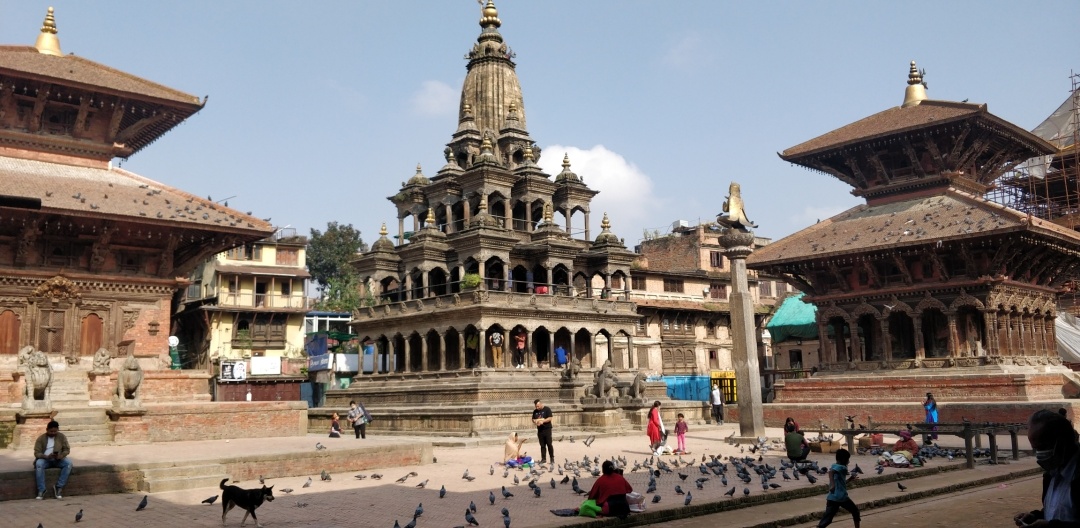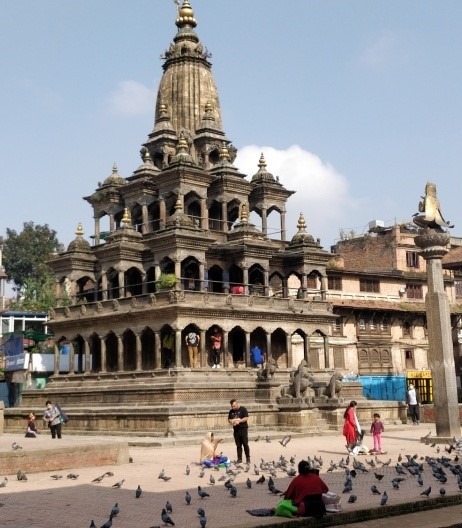Patan Sightseeing Places
Tourist Attractions
Patan is rich in culture, history and tangible and intangible heritages. The major tourist sightseeing places are briefly described below:
JAGAMADU PUKHU, PIMBAHAL
According to the local legend, the pond was built by Lakheys, a type of demon by piling up the stone one after another without any mortar of clay, in ancient times to please his wife. It is thus call, “Jagmadu Pukhu”.
The pond was used to irrigate the agriculture land nearby. The locals believe, if the pond is dried and the magical stone lying in the north-eastern corner of the pond is dried in the Sun for sometime, it will rain soon.
PATAN DURBAR SQUARE
Patan Durbar Square is situated at the center of the city of Lalitpur. It is one of the three Durbar Square in Kathmandu valley, all of which are UNESCO world heritage sites. One of its attractions is the ancient royal palace built during the Malla Dynasty.
GOLDEN TEMPLE
Hiranyavarna Mahāvihāra (literal meaning, “Gold-coloured Great Monastery ''), also Kwa Baha informally called The Golden Temple is a historical vihara (Buddhist monastery).
This pagoda of Shakyamuni Buddha was built in the twelfth century by King Bhaskar Varman and due to the competition between the local merchants who earned a lot of money from Tibet, this temple was gold plated by their donations.
According to legend, Hiranya Varna Mahavihar was built at a location where a rat chases a cat. Rats were still being fed at the site in 1994, but this may have changed over the years.
The buildings of the courtyard sustained structural damage during the 2015 earthquake. In July 2021 a start was made with the restoration.
KUMBESHWAR TEMPLE
The five story-tired pagoda, Kumbeshwar temple was built in 1392 during the time of King Jayasthiti Malla, it remains an essential part of the city’s religious life. At Kumbeshwar in Patan, a richly decorated Lingam, the phallic symbol of Lord Shiva is placed on a raised platform in the middle of the Kumbeshwar pond to receive homage Hindu, Buddhist and Shamanist on the full day in August. The god is considered as the conqueror of death.
MAHA BOUDHA TEMPLE
Maha Buddha temple is dedicated to Lord Buddha. The temple is often called the temple of a thousand Buddhas because a Buddha image is engraved on every brick. The temple dates back to 1585 and it was rebuilt after the 1934 earthquake. Mahaboudha’s design is based on the Mahabodhi Temple in Bodh Gaya, as the founder of the temple Abhayaraj visited there. The Mahabodhi temple in Bodh Gaya has long been an inspiration to the Buddhist community all over the world.
YEMPI MAHAVIHAR
Yempi Vihar is a heritage site near Baglamukhi Temple. The place was once visited by Guru Padmasambhava, who is believed to have stayed there for six months. It is said that Padmasambhava came to YempiVihar to spread the teachings of Buddhism in Tibet, which he did successfully. YempiVihar also plays a vital role in the annual RatoMachhindranathJatra, a popular festival that takes place in Patan. The Jatra is believed to bring good luck and prosperity to the city, and it is said that any work related to the Jatra must first begin at YempiVihar.
JYAPU MUSEUM
The Jyapu Museum in Lalitpur offers visitors a glimpse into the daily lives of the Jyapu people, a prominent indigenous group in the Kathmandu Valley. The museum is dedicated to preserving and showcasing the household objects and tools used by the Jyapu people throughout history. From farming equipment to kitchen utensils, visitors can explore a vast collection of artifacts that tell the story of the Jyapu people and their way of life. Visitors can also learn about the traditional festivals and rituals of the Jyapu people, which are an important part of their cultural heritage. The museum hosts regular events and demonstrations, where visitors can see traditional dances, songs, and other cultural practices in action.


